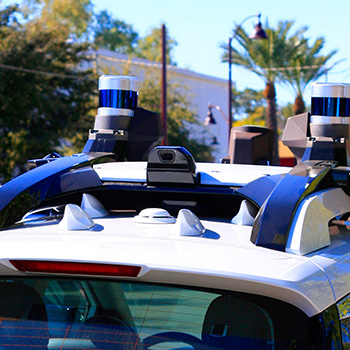Google’s Self-Driving Car Hit A Bus
Many expected a self-driving car to cause an accident at some point, and on February 14th, 2016 it finally happened. In Mountain View, California one of Google’s autonomous Lexus SUV’s side-swiped a city bus.
What went wrong with Google’s self-driving car?
 According to the New York Post, no police report was filed for the incident. According to Google, its self-driving car carries some responsibility for the incident. Driving around 2 mph, the self-driving car wanted to maneuver around some sandbags in a wide lane. Both the person inside the autonomous vehicle and the vehicle itself expected the approaching city bus to slow down and let the self-driving car over. Both miscalculated. Google’s autonomous automobile side-swiped the bus, which was traveling around 15 mph. While no one was injured, the autonomous car suffered minor damage.
According to the New York Post, no police report was filed for the incident. According to Google, its self-driving car carries some responsibility for the incident. Driving around 2 mph, the self-driving car wanted to maneuver around some sandbags in a wide lane. Both the person inside the autonomous vehicle and the vehicle itself expected the approaching city bus to slow down and let the self-driving car over. Both miscalculated. Google’s autonomous automobile side-swiped the bus, which was traveling around 15 mph. While no one was injured, the autonomous car suffered minor damage.
Google’s response to the car crash
As previously stated, the test “driver” believed, “the bus would slow or allow the Google (autonomous vehicle) to continue.” Google formally released a statement about the incident and said, “we clearly bear some responsibility, because if our car hadn’t moved, there wouldn’t have been a collision. That said, our test driver believed the bus was going to slow or stop to allow us to merge into the traffic, and that there would be sufficient space to do that.” The company now plans to reprogram their self-driving cars to believe that buses and subsequently large vehicles are less likely to slow down and let a driver over. As of yet, no official blame has been laid on the bus driver or the car driving itself.
History of self-driving car accidents
There isn’t much to say regarding the history of self-driving car accidents. In the six years Google has had self-driving cars on the road, only 17 minor incidents have been reported, and none of those–prior to the February 14th incident–were the autonomous vehicle’s fault. Considering that these self-driving cars have driven nearly 1.5 million miles, that’s an impressively low incident rate.
The future of self-driving vehicles
Public wariness about letting a computer drive
According to a new AAA survey, 75% of drivers are apprehensive about yielding up total control of their car to a computer. Alternatively, 75% of drivers whose cars already feature some autonomous features said they would trust a self-driving car. Regardless, no one believe this self-driving car crash will alter the vast majority of the public’s opinion about self-driving cars.
Self-driving cars in Arizona
Ford believes it will have a car it dubs partly autonomous driving through Phoenix, Arizona by the summer. Despite the fact AAA Arizona said three out of four Americans would feel unsafe inside a self-driving car, Ford plans to triple the amount of autonomous cars in Phoenix. In fact, the company believes completely self-driven cars my be ready as early as 2020.
Self-driving cars may the future for the elderly
While millennials are often at the forefront of new technology today, it seems several major companies developing technology for self-driving cars will target baby-boomers. Google and Uber believe the elder market to be ripe for autonomous vehicles, as driving can often prove difficult for those 65 years or older. Recently, Google let 94 year-old Florence Swanson ride in a self-driving car, an experience where she felt “completely safe.”
While the opinion of self-driving cars will continue to shift, the autonomous vehicle will take computers to a whole new level. The question will remain until these cars finally hit production: how will we benefit from these autonomous cars, and what will we lose?
Categorized in: California, Driving, Technology
